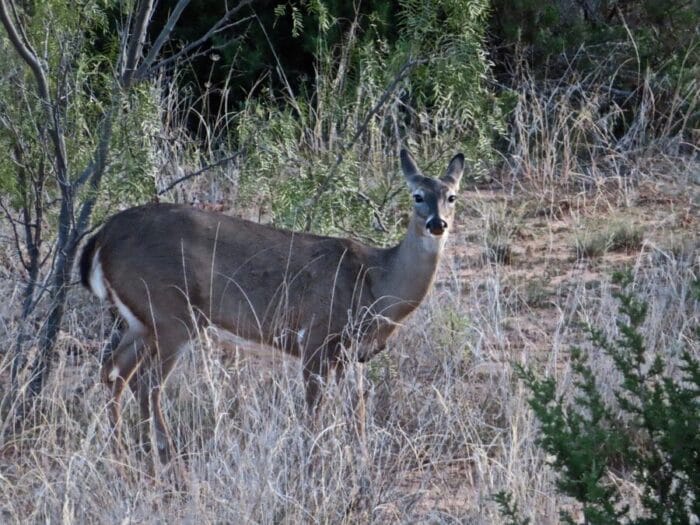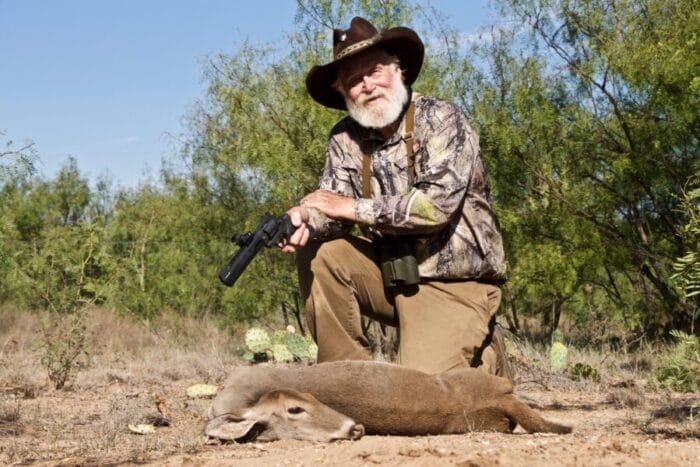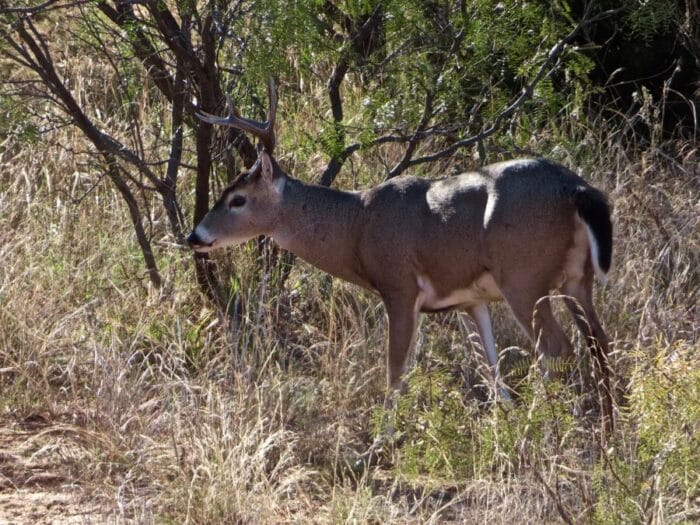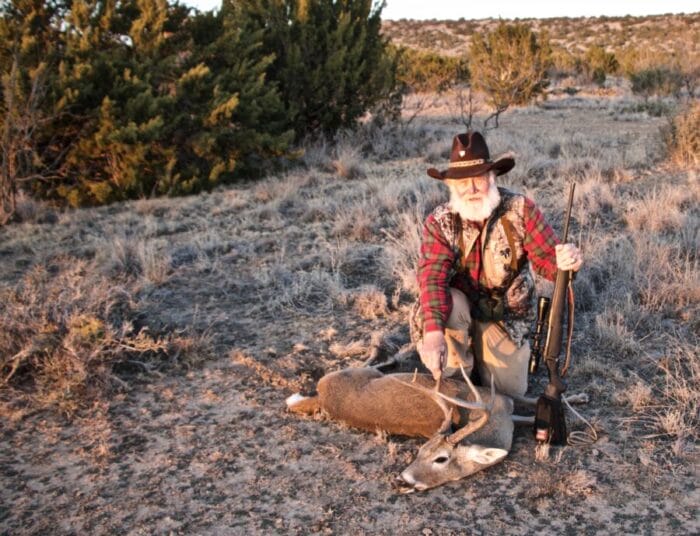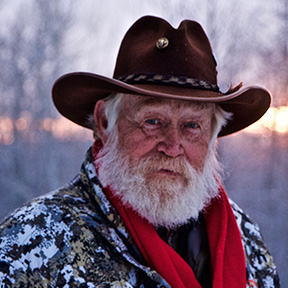Pressure and Persistence
It was the last few days of the 2022/2023 whitetail deer season. Thankfully, Texas’s Managed Land Deer Permit (MLDP) allows hunting deer until the last day of February on properties based on their approved management program. I was tremendously thankful Corey Mason, the Executive Director/CEO of Dallas Safari Club, mentioned the lease he and his father, Jim, and a few friends had an opening. I jumped at the chance to become a member of the 8,000-acre lease situated out west of San Angelo, Texas. Half of the ranch is relatively flat, reminiscent of the South Texas Brush Country. The other northern half is rocky cedar-covered hills and oak trees and brush-covered valleys. Combined, the terrain and vegetation are ideal whitetail deer habitat. The same hunters have been on the ranch for about 18 years adding to the intrigue of my becoming a part of the group.
2022’s winter had been unseasonably cold and dry. Spring and summer had been dry, with little or no rain, resulting in “reduced” antler development. Surprisingly, does on the property produced many fawns, and despite the dry and poor range conditions, they did an excellent job raising fawns. Most ranches throughout the area were fortunate if they had a 10% fawn crop (100 does raising ten fawns to the 6-month-old age).
Our lease based on game surveys conducted during August and September revealed the property had an unbelievably high fawn survival rate, topping 70%. That high fawn survival rate will ensure there will be a lot of four-year-old bucks in four years! I could not have been more pleased. All too often, hunters forget to look at fawn survival. Very few fawns any one year, and that cohort will be thin for the next numerous years!
I hunted the lease hard during the rattling time just before Thanksgiving. I rattled in and passed on numerous young bucks. Even the older bucks I rattled in were “merely” eight points.
Earlier that summer, I spent a lot of time on the range, shooting my .270 Win Mossberg Patriot, using Hornady’s Precision Hunter 145-grain ELD-X, and my Taurus Raging Hunter .44 Mag shooting Hornady 240-grain XTP Custom ammo. With the latter, I felt comfortable taking shots out to 100 yards and, with the .270 Win, out to 400 yards. I like shooting long-range steel or paper targets at long distances, but I like getting as close as possible when it comes to hunting.
Before the 2022 rattling season was over, I rattled in over 30 bucks, including an 8-year-old eight-point I shot at a distance of ten paces.
Part of our management program requires each leaseholder to shoot their allotted number of does. My allotment was nine does. This allowed me to use my .44 Mag and .454 Casull Taurus Raging Hunter revolvers, and my Rossi R92 .45 Colt lever action rifle. If pressure came into play, it was in making sure I shot my allocated does. I am proud to say that I took my eighth and ninth doe with two weeks of our MLDP season remaining. One of those fell to my .454 Casull Raging Hunter shooting Hornady’s Custom 240-grain XTP and the other to a .30-06 Mossberg Patriot shooting Hornady’s 180-grain CX Precision Hunter.
I am fortunate my immediate and extended family, which includes married grandsons who love to hunt but do not have as much time to do so as I do, all love venison. No matter how many deer I take each year, every bit of possible venison is utilized. I also have neighbors that are on required low-cholesterol diets. Venison is THE perfect meat for such diets!
“Pressure” was released once I had taken all my allotted does. Now, I could, at my leisure, continue hunting bucks once again. My allotment allowed me to take five bucks. During the rattling season, I had taken a nice, eight-year-old eight-point. During that same time, I had passed many younger bucks. Bucks that I thought would produce much bigger racks in an “average rainfall year.” As the season was coming to a close, I spotted a buck with a saggy belly, jowls, and knobby knees. His brow tines were essentially lacking; thus, it was a 3×3. I shot him after a long stalk. Unfortunately, I hit him a bit far back. I watched him run up a steep slope. That is not a good sign. My son-in-law, Lance Tigrett, had watched the stalk and walked to join me where the buck had stood when I shot. We soon picked up a faint blood trail. We followed the buck, drop by drop, up slopes down into deep valleys, then back to the top of a long ridge. Sometimes, we merely followed tracks we thought might be him. Then thankfully, after thirty or so steps, we were rewarded by another drop of blood.
The buck headed through the densest brush on top of the long and narrow ridge. He jigged and jagged across the top, then headed toward the edge. Lance and I followed.
At the ridge’s edge, the buck headed back downhill. I stopped and glassed the cedar and brush-covered slope and valley below. I hoped we could spot him either walking or bedded. Personal pressure of finding and putting down the buck had built to a substantial level.
After several minutes of glassing, “I think I might see him!” said an excited Lance. “Look… noon straight before us, just where the slope turns pretty flat. There’s a dead mesquite with a big fork. Looks more like a huge stump than a dead tree. Look ten degrees to the right of it and maybe fifty steps beyond. I can see a deer’s back. Through the screening of cedar, it looks like the antlers of the buck you shot.” I spotted the deer, thanks to his directions.
“Surely looks like him!” Said I, walking to our left, “Gonna move over and see if I can get a better look.”
Moments later, “I’m pretty sure it’s him. Horns look the same, and I think I can see what looks like blood on his side.“ The buck was lying down where I could see most of his side. “Lance, if you don’t mind, stay up here where you can keep an eye on him. I’m going to drop down and try to get close enough for a shot. He’s watching into the wind, looking away from us!”
I scrambled down the slope and headed toward the bedded buck, using the dead mesquite with the big fork as a marker.
Ten minutes later, I thought I should be within thirty yards of the bedded buck. Ever so cautiously and slowly, I moved forward a few more steps. Then, I could see his antlers, head, neck, and part of his back. I believed I could put a bullet into his neck and finally put my buck down. Getting a solid rest against a cedar, the crosshairs settled on the buck’s neck. I pulled the trigger. All that said, I am not a fan of shooting a deer in the neck. There is simply too much room for error. But I was close as I was, and if the deer had not died in his bed and he jumped and ran, I would have had time and space for a quick follow-up shot.
Thankfully, at the shot, the buck was dead. Even so, I quickly bolted in a fresh round and kept my rifle trained on him for another 30 seconds. When there was movement, I walked up to his side. He, like my first buck on the lease, was 8-years old.
I hate wounding an animal, and if it happens, I will make every possible effort to follow and put it down as quickly as possible. Persistence, not giving up on the blood trail, and sometimes merely the occasional drop and tracks, had paid off.
I spent as much time as possible during the last two weeks of the MLDP season looking at and passing bucks. By then, they had again gathered into bachelor herds. On my last day on the lease, I spotted several bucks I could not wait to see during the 2023 fall hunting season.
Now that we are hunting our lease in the 2023 hunting season, I saw much better antlers than last season. I already have passed several 10-point bucks.
I rattled in 23 bucks the two days I got to hunt during the approaching rut. I also saw two bucks at great distances I hope to find later in the hunting season, knowing that tracking food sources during January and February should pay handsome dividends. Time will tell. Yes, there will be a bit of self-imposed pressure, but through persistence, I have a feeling my patience will pay off.
Larry, during October, released his newest book, DEER ADDICTIONS, as well as a book he co-authored with Luke Clayton, CAMPFIRE TALK. Both are available through Catfish Radio, The Sporting Classics Store, and Amazon and will soon too be available on Larry’s upcoming new website, where you will also find his podcasts and blogs.
Professional wildlife biologist/outdoor communicator, Larry Weishuhn, known to many as “Mr. Whitetail”, has established quality wildlife management programs on over 12,000,000 acres throughout North American and other parts of the world. He has hunted big game with rifle and/or handgun on six continents. Larry is a Professional Member of the Boone & Crockett Club, life-member of numerous wildlife conservation organizations including the Dallas Safari Club, Mule Deer Foundation, and Wild Sheep Foundation. He currently serves on the DSC Foundation Board of Directors, is one of three co-founders of the Texas Wildlife Association; is a member of the Legends of the Outdoors Hall of Fame and the Muy Grande Hall of Fame; he too, received the Zeiss Lifetime Achievement Award among many other honors.

